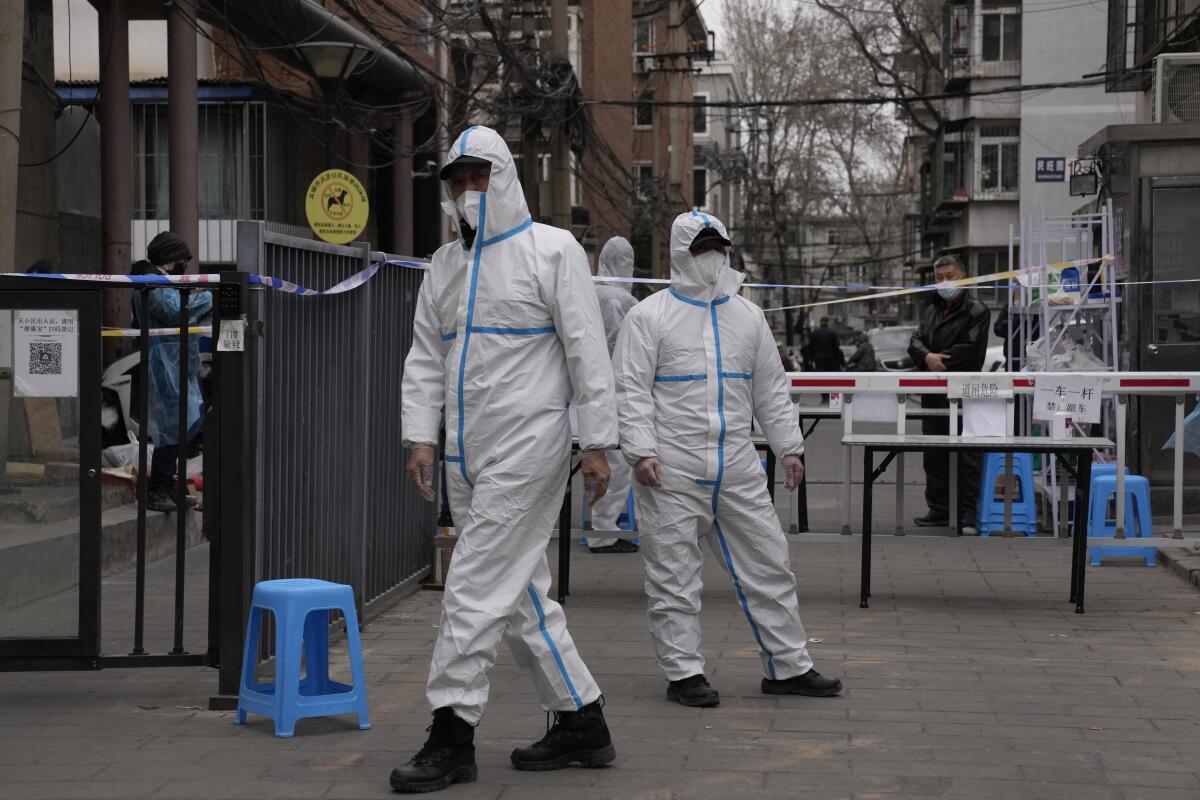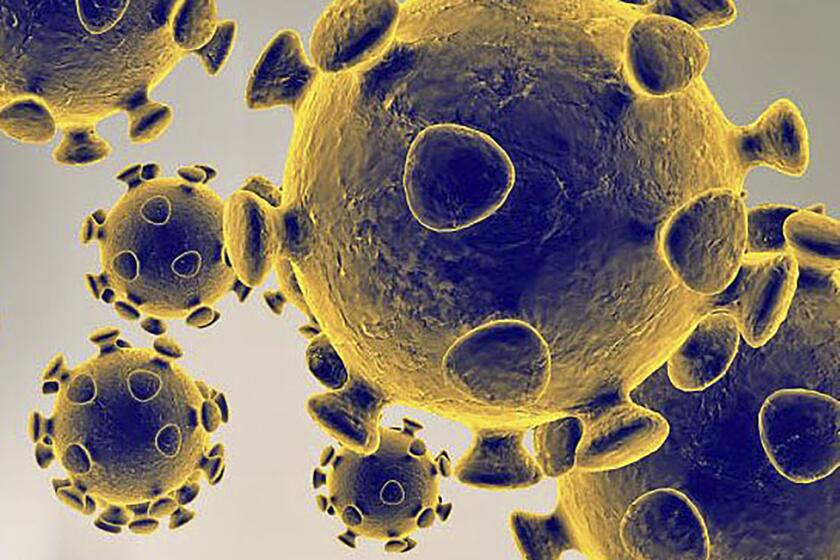What China’s COVID lockdowns say about the pandemic’s next stage

- Share via
Two years since the start of the COVID-19 pandemic, China has placed many areas — including two of its largest cities, Shanghai and Shenzhen — back into lockdown for its worst outbreaks since 2020. This is an ominous development in a country that has, so far, effectively controlled the pandemic virus that first emerged within its borders.
The mainstay of the Chinese pandemic control policy has been its “zero COVID” approach of using aggressive lockdowns, widespread asymptomatic testing, prevalent masking and vaccination. China has relied on Chinese-made vaccines, produced either by inactivating the SARS-CoV-2 virus or by using a benign adenovirus (a common virus type) as a vector.
China’s aggressive approach has been associated with substantially lower morbidity and mortality compared with many Western countries, which largely have had no overarching COVID strategy. Since the start of the pandemic, about 3 per million Chinese have died compared with approximately 3,000 per million Americans. China has been able to resume societal and economic activities for periods between lockdowns, even as some have criticized the intensity of its lockdowns as draconian.
Contributor: The pandemic isn’t over. Omicron won’t be the last coronavirus variant to haunt us
If we’ve learned anything, it’s that the virus has an extraordinary ability to adapt — and is unpredictable.
But now, China’s aggressive policies are no match for the highly infectious Omicron variant. The stark rise in COVID-19 cases is likely to be followed by an increase in hospitalizations and deaths. If the lockdowns in major commercial centers continue, they can affect the Chinese economy with substantial consequences for global supply chains. Shenzhen, which borders Hong Kong, is one of the largest ports in the world, and China’s electronic manufacturing and technology sector hub. The spring 2021 outbreak in Shenzhen disrupted port activities, leading to a substantial increase in global shipping rates and in turn higher prices for imports from China. Although local officials said Shenzhen businesses will be allowed to reopen, they noted the city is still experiencing “sporadic outbreaks.”
It is now clear that, facing Omicron — the most infectious form to date of the pandemic coronavirus — China needs to update its COVID-19 control strategy. In fact, no matter what each country’s approach has been so far, everyone should have similar priorities moving forward, particularly if the BA.2 Omicron variant continues to spread.
First, China and other countries need to identify and keep administering the most effective vaccines. Even against highly infectious variants such as Delta and Omicron, mRNA vaccines have consistently outperformed other types of vaccines. In fact, mRNA vaccines continue to provide a high level of protection against severe disease and hospitalization during the Omicron era. Although the Chinese vaccines have been incredibly useful, particularly pre-Omicron, the emergence of highly infectious variants requires China to up its vaccine game by investing in mRNA technology for boosters.
China has the vaccine manufacturing infrastructure to adapt mRNA technology for mass production. However, the Chinese government has been slow in approving mRNA vaccines. Last spring, there were reports of BioNtech, the German company that worked with Pfizer to produce the first mRNA vaccine, and its Chinese collaborator Shanghai Fosun Pharmaceutical introducing an mRNA vaccine in China. The plan included an initial 100 million doses imported for the Chinese market followed by in-country production of 1 billion doses. Since then, there has been — for unclear reasons — little progress on approving and deploying this vaccine by Chinese authorities. This is in contrast with China’s rapid authorization of the vaccines it initially developed.
China could in theory use its existing non-mRNA vaccines to roll out more boosters. But it has limited real-world data on how effective those vaccines have been on important questions such as the number of boosters needed, optimal separation between doses and how long protection lasts from initial doses as well as boosters. These data are lacking partly because China had relatively few post-vaccine cases to study before the Omicron wave, and it has not leveraged its partnerships with countries in South Asia and Africa that are using Chinese vaccines to extensively study how well its vaccines have worked in those places.
The coronavirus variant known as BA.2, or the ‘stealth Omicron,’ now causes more than a third of new Omicron infections around the world.
There have been a few sporadic real-world studies of Chinese vaccines, but their number and extent have fallen short of what is needed to develop a comprehensive evidence base for decision-making about future vaccine distribution. More such studies are needed, alongside continued study of how best to deploy mRNA boosters in countries that initially used inactivated vaccines.
To that end, and most importantly, all countries must remember this is still a global crisis. Much of the world remains unvaccinated, and that undermines control of the pandemic anywhere. U.S. and Chinese relations have deteriorated since COVID, and the two countries have worked separately on increasing the global vaccine supply. But it is in both of their interests to collaborate to control this pandemic. American vaccine technology combined with Chinese manufacturing capacity can be a potent mix to increase global vaccine supply of highly effective vaccines.
Smallpox eradication provides a relevant example of two rival powers forming a working relationship to address a devastating disease. During the peak of the Cold War in the 1960s, the United States and the Soviet Union forged a collaboration to eradicate smallpox despite their suspicion of each other’s motives. The rest, as they say, is history.
Saad B. Omer is the director of the Yale Institute for Global Health and a professor at the Yale University schools of medicine and public health. SaadOmer3
More to Read
A cure for the common opinion
Get thought-provoking perspectives with our weekly newsletter.
You may occasionally receive promotional content from the Los Angeles Times.











